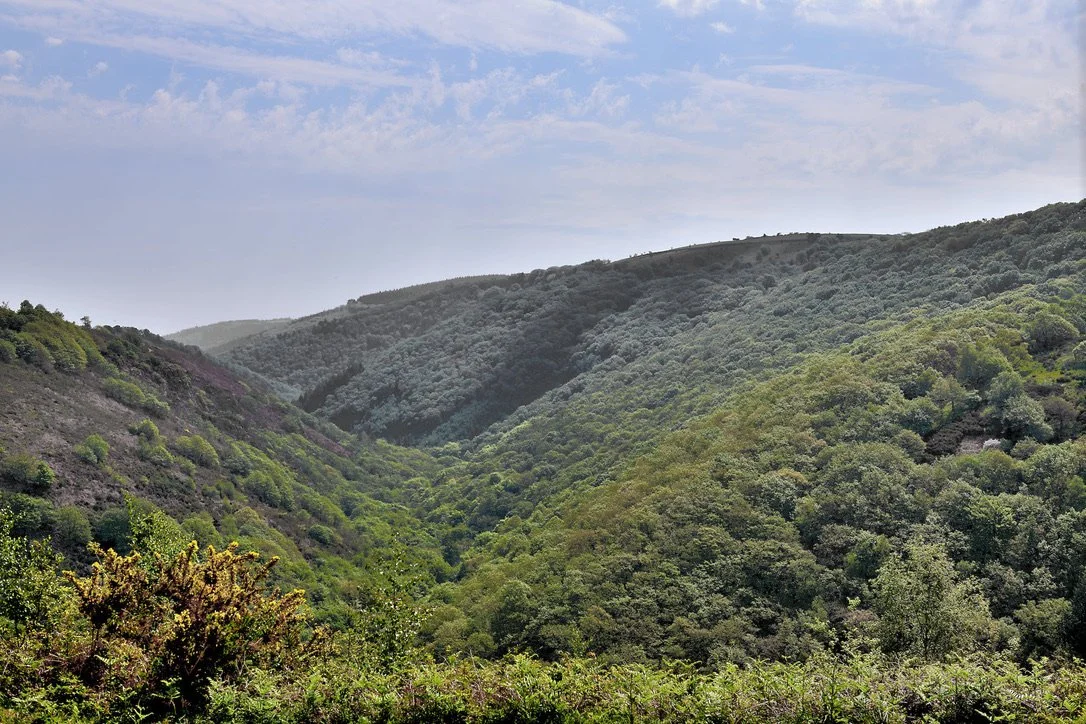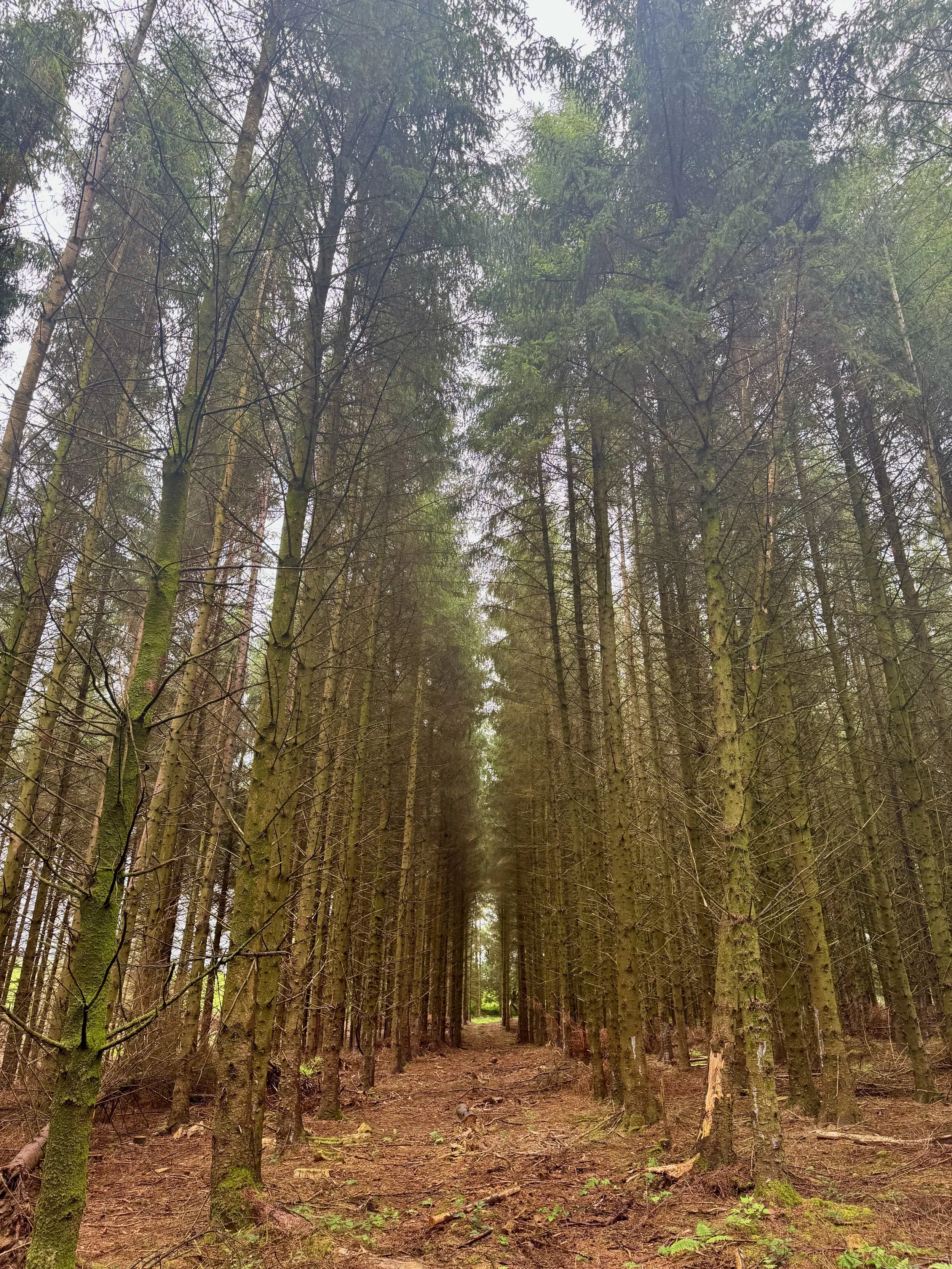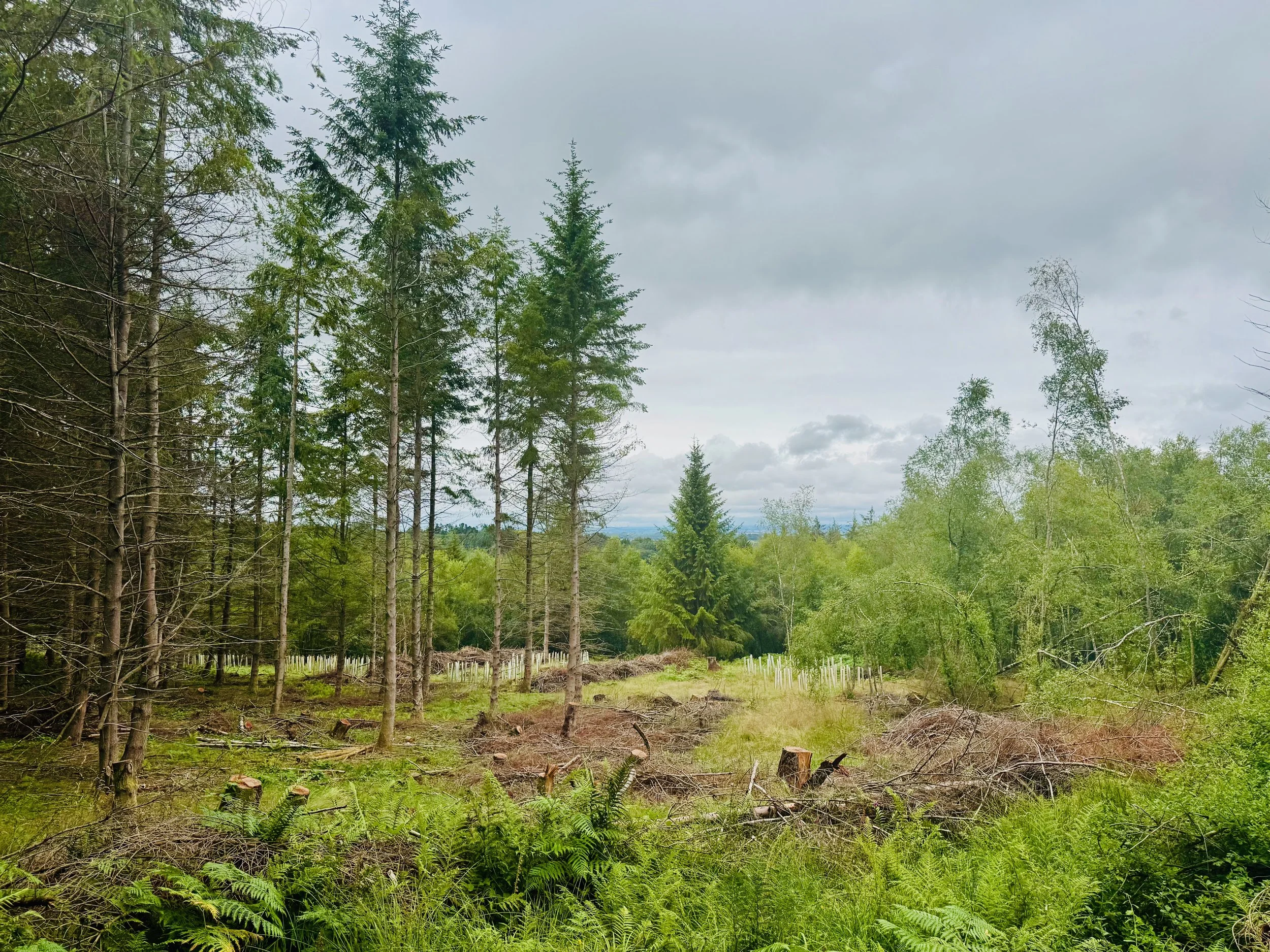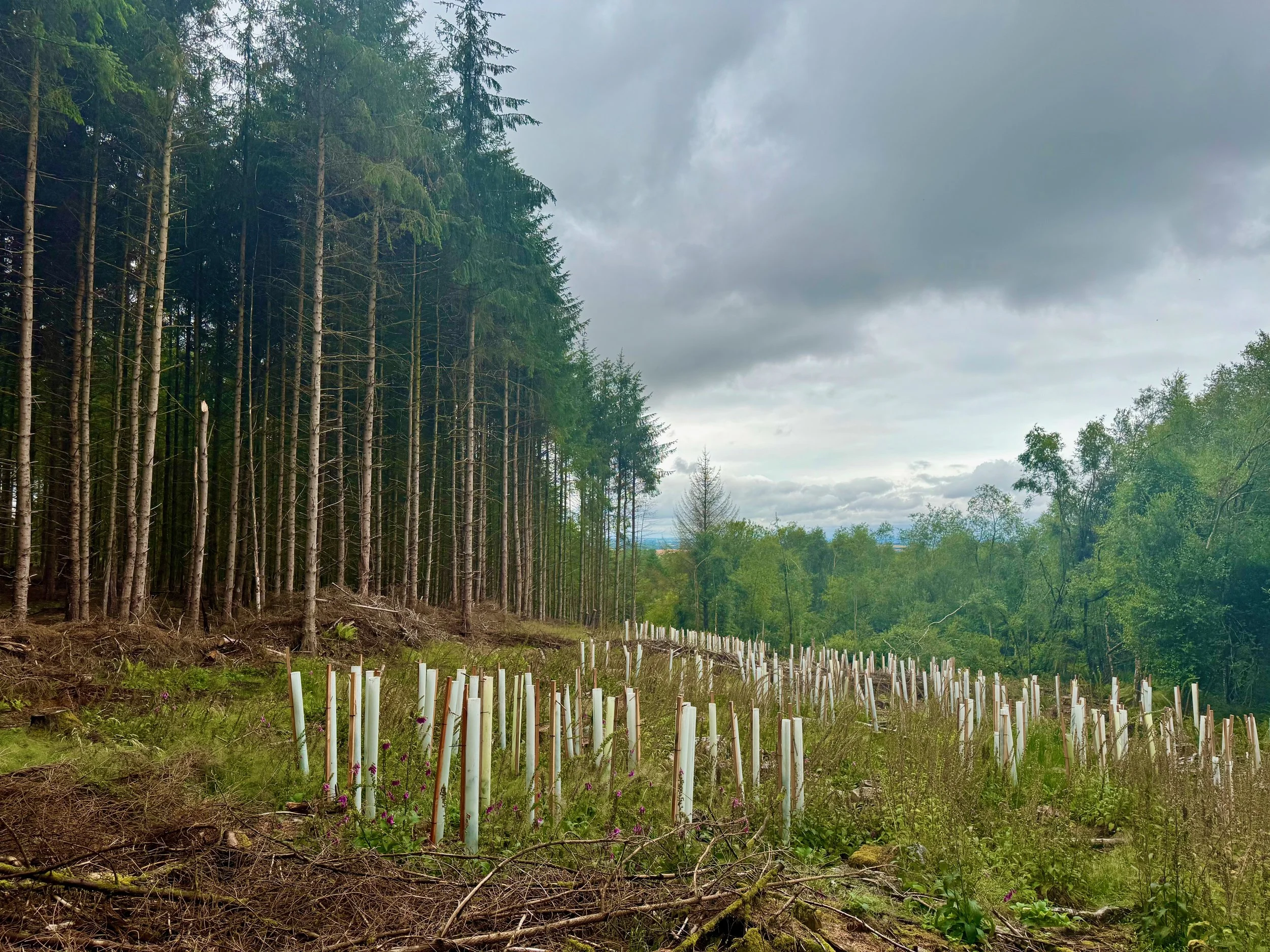Rewilding the Flow
Natural Flood Management in Fingle Gorge and the Hope of Halls Cleave
Nestled within the rugged beauty of the Upper Teign Catchment lies the Fingle Gorge - a steep-sided woodland valley rich in biodiversity, steeped in history, and beloved by walkers, anglers, and nature enthusiasts. But beneath the surface of this natural haven lies a story of recovery and resilience, driven by an increasingly valuable environmental mission - Natural Flood Management (or NFM for the acronym lovers amongst you!).
The Fingle Gorge - The Majority of this picture are broadleaf trees with conifer plantation visible on the far hill in the distance
What Is Natural Flood Management?
Natural Flood Management is about working with nature, rather than against it. Instead of relying solely on concrete barriers and bespoke drainage infrastructure, NFM embraces and reinvests in the land’s natural features - wetlands, forests, soil, and riverbanks. The aim here is to slow down, store, and filter water after rainfall. It reduces flood peaks, can improve water quality, supports biodiversity, and when carried out with river catchments in mind, reconnects rivers with their natural floodplains.
And in the Fingle Gorge, it’s beginning to reshape the way we think about conservation.
The Fingle Vision - Turning Pines into Possibility
At the heart of this change is Halls Cleave, a secluded valley above the River Teign where our friends in the Woodland Trust and National Trust have, and are continuing to deliver, some transformative work.
Historically dominated by dense conifer plantations, which are remnants of the boom in 20th-century commercial forestry, the area was once shaded, acidic, and ecologically suppressed. Today, that is changing.
Conifer Plantation - Note the baron woodland floor devoid of vegetation and life
The thinning and gradual removal of conifers is making way for the restoration of native broadleaf species like oak, birch, and hazel. This isn't just about planting trees - it's about restoring a complex and resilient woodland ecosystem, something that would have been common place in the Fingle Gorge prior to the ‘conifer era’. So, broadleaf trees support a far greater range of wildlife, enhance soil health, and allow light to reach the forest floor, nurturing wildflowers, fungi, and insect life that are the backbone of a thriving forest.
But what’s perhaps even more profound lies beneath the surface - in the soil beneath our feet!
The Forest Floor - Healing from the Ice Age Onward
Ancient woodlands are time capsules, and luckily, within the Teign Catchment, we are blessed with some fine examples that are a marvel to the senses when walked through. These forest floors, in places like the Fingle Gorge, hold a biological memory that stretches back to just after the last Ice Age - nearly 10,000 years. These soils are alive with an intricate web of fungi, bacteria, invertebrates, and seeds. One of the most vital of these life forms is mycelium - the underground fungal network that helps trees share nutrients, communicate stress, and store carbon.
The introduction of dense conifer plantations over broadleaf native trees disrupts this ancient network. The acidic needles, heavy shade, and tight planting inhibit the mycelial webs and the native ground flora that evolved in Britain’s temperate climate. But as conifers are gradually thinned out and removed, and broadleaf trees return, this ancient woodland floor is given the chance to reawaken. Mycelial networks can re-establish. Dormant species can reappear. Nature, given time and light, remembers how to heal. Again, it’s like restoring the natural balance within a river, but this time, from the soil up!
Thinning of the conifers to allow more light and replanting of broadleaf species
Leaky Dams, Wetlands, and the River’s Future
Crucially, the felled conifer timber isn’t being wasted. It’s being used to create leaky dams - natural, low-impact structures installed across existing small tributaries and watercourses. These simple features slow the flow of water during heavy rain, mimicking the way natural landscapes behaved before modern development altered them.
Leaky Dams have two profound benefits:
They can reduce flood risk by holding back peak flows, giving rivers more time to absorb water naturally.
They can protect the river during drought by storing water in the landscape, especially in newly reformed wetlands, which slowly release moisture back into the river system by gravity during dry periods.
A nice example of a leaky dam - allowing water to flow, however, holding water back during heavy rainfall
And this isn’t just theory. It’s been demonstrated on other catchments and the recent work in Halls Cleave can only help as heatwaves and prolonged dry spells become more common. If only we had more of this habitat in place within the Teign Catchment. With recent temperatures soaring and rainfall at a minimum, the Teign would only benefit from the trickle-fed stability provided by upstream natural storage. After all, it’s a system designed to protect both people and nature - flood mitigation in the wet season and flow support in the dry. The best of both sides!
A Shared Catchment, A Shared Responsibility
This work is more than woodland management, it extends down to our beloved river - it’s total landscape healing! It’s a subtle reshaping of our catchment’s hydrology to reduce the impacts of ever-visible climate change. And it deserves to be seen, supported, and celebrated by everyone who values our rivers.
For anglers, the improved water quality and more stable flows help protect cold-water salmonids during heat stress and low water.
For walkers and nature lovers, the restored woodland is alive with possibility - bird species returning to the canopy, fungi rebuilding their underground cities, and wildflowers emerging from a long, long hibernation.
For communities downstream, there’s real peace of mind in knowing that the catchment is working as a natural buffer - absorbing the shocks of flood and drought through careful, intelligent restoration.
A clear divide between conifer plantation and broadleaf woodland
Looking Forward
As extreme weather events become more common during our seasons, our ability to adapt and protect vulnerable landscapes becomes even more critical. The work in Halls Cleave - thinning conifers, restoring native trees, rebuilding soils, installing leaky dams, and welcoming wetlands - is an exemplar for how we can align forestry, river protection, and climate resilience under one banner.
But these efforts need eyes, voices, and hands. They need support from everyone who values the wild richness and the unique biodiversity of a well-functioning forest habitat that complements and supports the health of our river. After all, a tree is just a river bound in bark.
So next time you walk the paths of Fingle, pause. Look beneath your feet. Listen to the river. And know that through careful stewardship and quiet interventions, the land is learning to breathe again.





